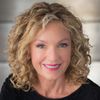
Growing up in 1960s Brooklyn, TV viewing in my house was simple and predictable: Friday nights found us turning on The Addams Family (accompanied by Swanson TV Dinners to round out the experience), and Sundays (our family's favorite TV night) featured Wild Kingdom, The Wonderful World of Disney, followed by The Ed Sullivan Show. There were far fewer channels compared to today, but there was something magical about it: everyone watched the same thing, at the same time, solidifying our collective consciousness, which was dominated by the future baby boomers of America. Worshipped by marketers, everybody wanted a piece of us and the most effective way of getting our attention was by harnessing the power of television. And thanks to those media messages and the postwar economic boom, we bought and bought and bought, making us extremely desirable for a really long time. What happened? Not much, except we got older.
The Chosen Ones No Longer?
The television industry -- and the advertisers who fuel it -- catered to us for decades, creating a true symbiotic relationship. But somewhere along the way, we started to age out of the highly appealing 18-to-49-year-old demographic. Boomers were pushed off the radar screen as soon as we hit 50, watching helplessly from the sidelines as programming (and marketers) continued to focus on everyone under 49, who were, weirdly, not 'us'. It was a paradigm shift we didn't expect, and certainly didn't want.
Are We Incompetent, Impotent and/or Incontinent?
Even when the powers that be developed programming with the post50 market in mind, they just didn't seem to get it. In recent years, shows were created that had nothing to do with our lives now (or ever). One was about Playboy bunnies and another focused on the lives of Pan Am flight attendants . . . both set in the '60s. Both (surprise, surprise) were epic fails.
And let's not get started on the advertising geared to us. As Jane Pauley so perfectly said while moderating the "Rethink 50+ Town Hall" last week (see below for viewing details), "If youth sells to the boomer market, and your only impression of (boomer) viewers comes from the commercials run during the evening newscasts, we are either incompetent, impotent or incontinent."
A New Paradigm?
Sure, a lot of us watch cross-generational hits like NCIS (my teenaged daughters introduced me to it), Modern Family, Dancing With the Stars, and the Good Wife. But we want more. Much more. And since we're talking about the largest, most influential and affluent demographic in the history of the world, I think there's a pretty good shot we're going to get it. Winds of change are finally in the air.
Could it be that enough of us are "mad as hell and we're not going to take it anymore" and we're going to push for the next shift? Sensing our growing frustration, two influential powerhouses have joined forces to dispel the myths about the 50+ market, and create programming that presents us as we truly are: a large and growing group that controls 75% of the wealth in this country, is redefining aging, living longer and better, and refuses to be ignored.
Television You Really Want to Watch?
AARP, the largest organization geared to the 50+ market, with a membership of more than 37 million and which also publishes AARP The Magazine (the world's largest circulation magazine) and produces national television and radio programming (full disclosure: I write weekly for aarp.org) has teamed up with RLTV, the only cable network created specifically for men and women over 50 with shows focusing on career, health, finance, relationships and everything else that real life after 50 is all about, with high-profile hosts such as Jean Chatzky and Joan Lunden. Together, AARP and RLTV will present two must-watch programming events, both hosted by Emmy Award-winning television journalist, former "Today Show" host, and AARP contributor Jane Pauley, designed to encourage a change in how we talk about aging in America:
- January 31st at 9pm (ET): Boomers 2.0: A Generation Re-Imagined is a compelling documentary that explores the huge impact boomers have had on the world so far . . . and how we are continuously reinventing what it means to age in America. As one post50 cyclist said during the program, "I'm not 56, I'm 18 with 38 years of experience . . . ". (Want to watch a little sneak preview? Click here.)
I had the great opportunity to meet and listen to some incredible experts and thought leaders focusing on the 50+ market during the Rethink 50+ Town Hall taping last week, including film critic Jeffrey Lyons, NBC Research President Alan Wurtzel, AARP The Magazine's Editor-in-Chief Nancy Perry Graham, United HealthCare Chief Marketing Officer Terry Clark, CBS' Chief Research Officer David Poltrack, and many others. Together, with a bit of participation from audience members, they explored probably the #1 challenge facing advertisers and the media who want to reach this market:
How can we educate, inspire and influence the largest demographic in the history of the world in ways that are relevant, entertaining and meaningful, without talking down to them, or around them?
50+ Market Accounts for 50% of Spending and Represents 75% of America's Wealth
Some of the best quotes of the evening, most of which you'll hear when you tune in to Rethink 50+ Town Hall on February 7th, were:
Every seven seconds somebody in this country turns 55, and when you do, you move outside of the last Nielsen monetizable demographic. It sounds like a lot of jargon but what it really means is that people are forgotten, but they're not gone. And that's a huge issue as the country ages.
-- Alan Wurtzel, NBC
In 2002, 18-49 year olds were 62 percent of population; today they are 55 percent of the population, and in 2 years they will be 53 percent of the population. What marketer would ever say, I'm going to market to less and less of my consumers every year? It doesn't make any sense. So, it's clear: marketers have to move with the population. Add to that that the fact that baby boomers are paying off their houses, their kids are getting out of school, and they have an extraordinary amount of discretionary income. They are actually becoming more valuable consumers.
--David Poltrack, CBS
Marketers need to understand that the baby boom generation is very quickly shifting from making money to spending money. And they've got a lot of money to spend.
-- Brian Terkelson, Mediavest
Boomers account for 50 percent of spending but only 10 percent of marketing dollars are directed at us. I think we have to play harder to get, frankly, because there's a big disconnect.
-- Nancy Perry Graham, AARP
Top Ten Things Programmers and Marketers Should Never Do (if they want us to like them!)
I wasn't on the panel (just sitting in the audience, taking it all in, making notes, and nodding my head frequently in agreement), but if I had been, I would have shared my "Top Ten" list of what programmers and marketers should NOT do when trying to connect to the post50 market, and I really hope all of them are listening:
- Don't use humor that belittles us and makes fun of aging, because it won't be funny and can be a real turnoff.
- Don't try to convince us it's all about staying young forever. Don't tell us how we can look younger. Tell us how we can look and feel better.
- Don't use models (male or female) that are half our age or airbrushed to the point where they look like they're 25 if they're supposed to be 55. It can be tricky, though, because we don't want you to use models that portray us as frumpy either.
- Don't use fear in your public message: "Are you worried about ...?" Scaring us will not lead to action. However, understand that fear is often a miraculous life-changer. The fear of illness can keep us exercising and eating well. The fear of not having enough money as we age could cause us to investigate financial products more closely. You need to understand the nuance but be careful how to use it in your marketing message.
- Don't focus on what's wrong or needs help due to aging; rather, focus on the benefits or rewards of the product or service. Don't try to "fix" us, as if growing older were an undesirable state of being, or an incurable disease.
- Don't be shy about viewing us as sexually active beings. The "Fifty Shades of Grey" books opened up a great opportunity for all of us --consumers, marketers, and content developers--to talk about sex after 50. And just because we're over 50 doesn't mean we're only interested in Viagra.
- Don't talk only to the man in the family. Turns out that women (and this is absolutely true in my home) decide how the money should be spent, on what brands, where they should travel and stay, even which cars should be bought. And, we're buying things for all our kids who are returning home to live with us, too.
- Don't think traditional media is the only vehicle. Think about YouTube channels and web TV as very interesting ways to engage and connect. After all, the 50+ market is pushing the growth of social media to new heights.
- Don't assume just because this market watches television that you are reaching us. If a marketer continues to talk directly to the 18-to-49-year-old (with a focus on the 18-to-34-year-old), we will pick up on that, and we will tune you out.
- Don't make us feel like we're over the hill, not cool, sexy or smart. Make us feel good about ourselves, and we will watch your shows and buy your products. Trust me.
I'm looking forward to hearing what you think.
* * *
For more tips on living your best life after 50 visit www.bestofeverythingafter50.com. Staying connected is a powerful tool! Keep me posted on how you're doing by subscribing to me on Facebook and "tweeting" me on Twitter at @BGrufferman. Check out my weekly columns on AARP and FOF, too. My next book, "The Best of Everything Guide to Your Best Body After 50 (and Beyond)" will be out in 2013!
